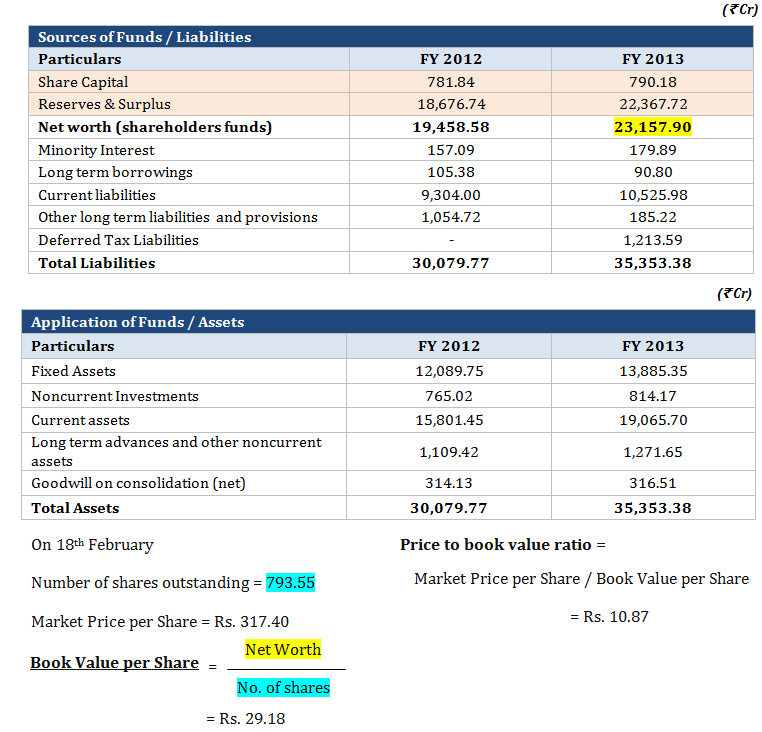Investors spend time in identifying companies with strong profits and growth prospects. Before investing in the stock market, the uncertainties, the ups and downs, questions like what is the fair value of the share, what price should I pay for a company’s shares etc. become relevant, rightly so.
Various valuation techniques like the price to earnings method, the Discounted Cash Flow (DCF) analysis and the price to book value ratio are employed to calculate the fair value of a share. While DCF can be tricky and requires an estimate of (i) future cash flows, (ii) expected return required by the investor (iii) discount factor etc, the price to book value ratio is an easier method (though it does have its drawbacks, which are stated below).
What is Price to Book Value Ratio (P/B ratio)?
It is a valuation ratio used by investors which compares a company’s per share price (market value) to its book value (shareholders’ equity). Expressed as multiple (i.e. how many times a company’s stock is trading compared to the company’s book value per share), it indicates the amount which the shareholders are paying for the net assets of a company.
How to calculate
Price to book value ratio is equal to share price divided by book value per share.
P/B ratio = Market Price per Share/ Book Value per Share
Book value is equivalent to the amount of cash shareholders would receive if all of the company’s debts, both short-term and long-term, were paid off and all remaining assets were sold. Book value per share is calculated by dividing shareholders equity (i.e. Net worth) by the number of outstanding shares.
Net Worth = Share Capital + Reserve and Surplus
Let’s explained the concept with the help of example:
Balance Sheet – ITC Limited (Consolidated)
What Price to Book Value Ratio tells us?
Price to book value ratio is particularly useful for value investors, who are always on the hunt for stocks which are available below their intrinsic or real worth.
If P/B is less than one, it indicates that either the market believes the asset value is overstated, or the company is earning a very poor (even negative) return on its assets.
P/B ratio usually works well only for companies which have large assets on their books such as, infrastructure and real estate companies, or companies in other manufacturing sectors – steel, automobiles etc. The ratio will not work well in the service sector. For example – IT and consulting companies where the primary assets are human resources.


